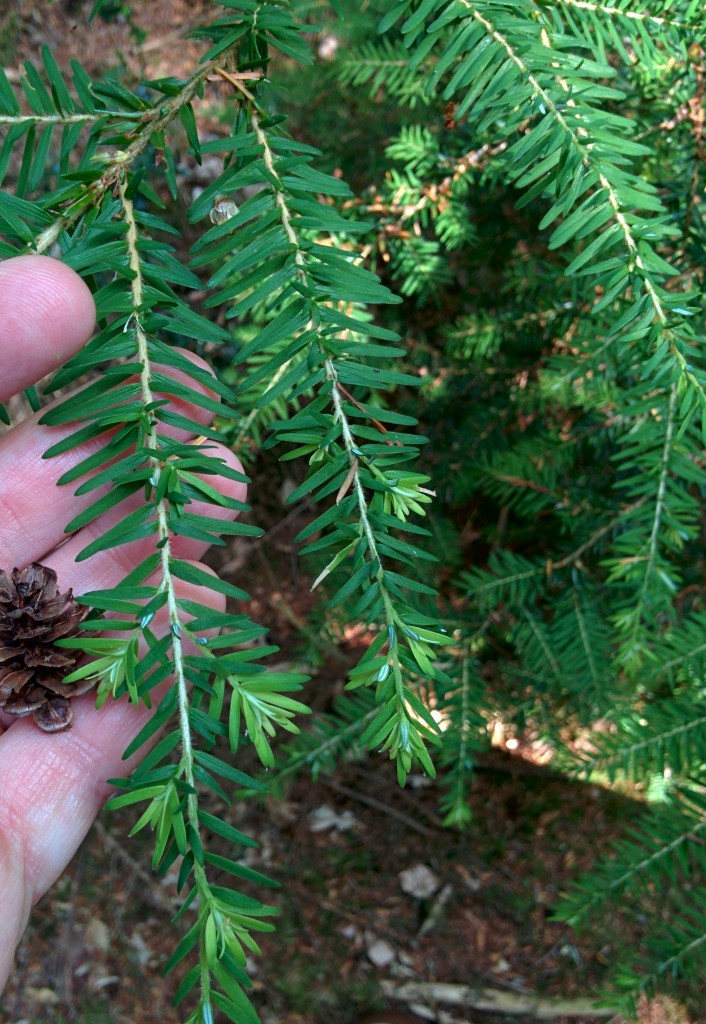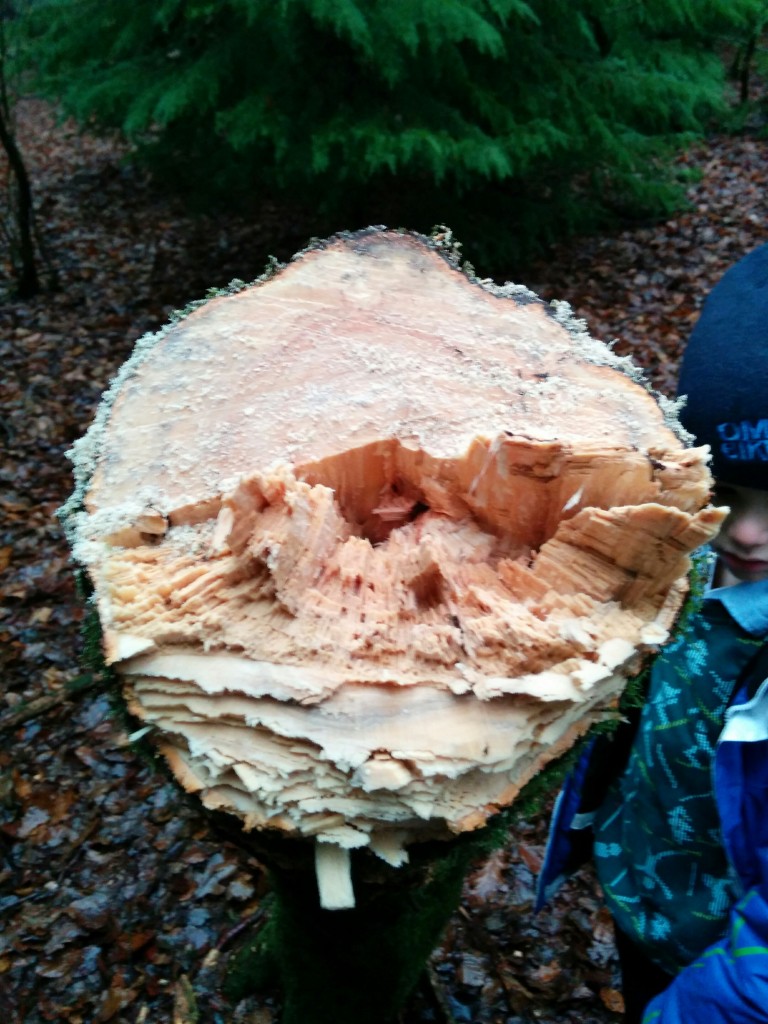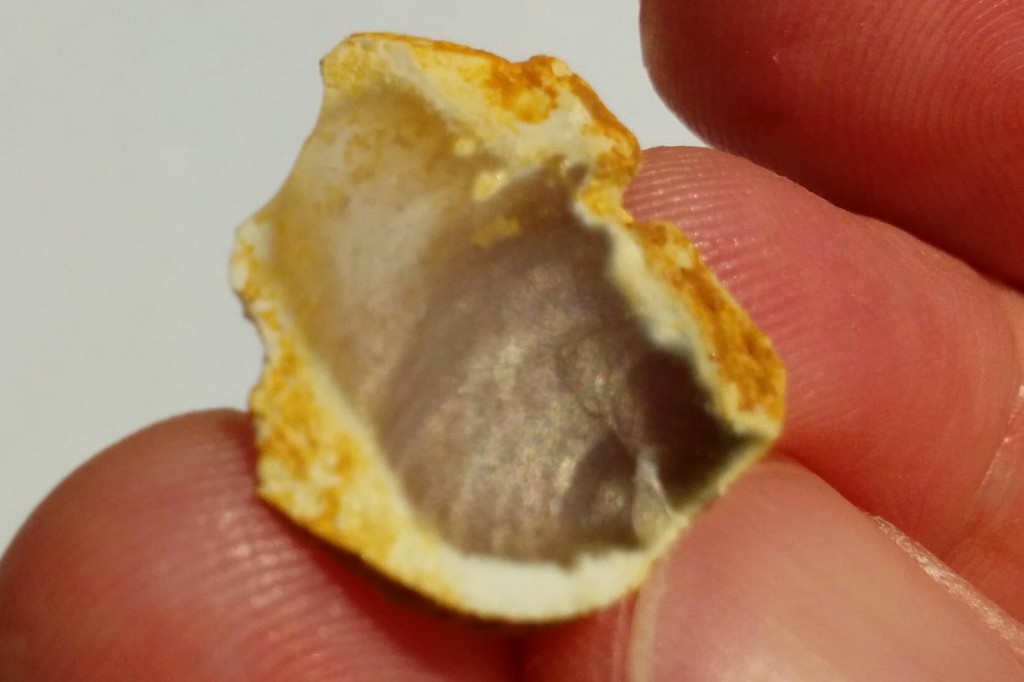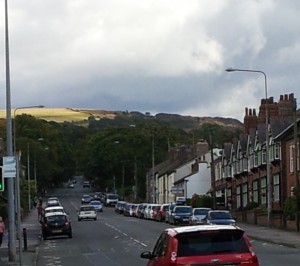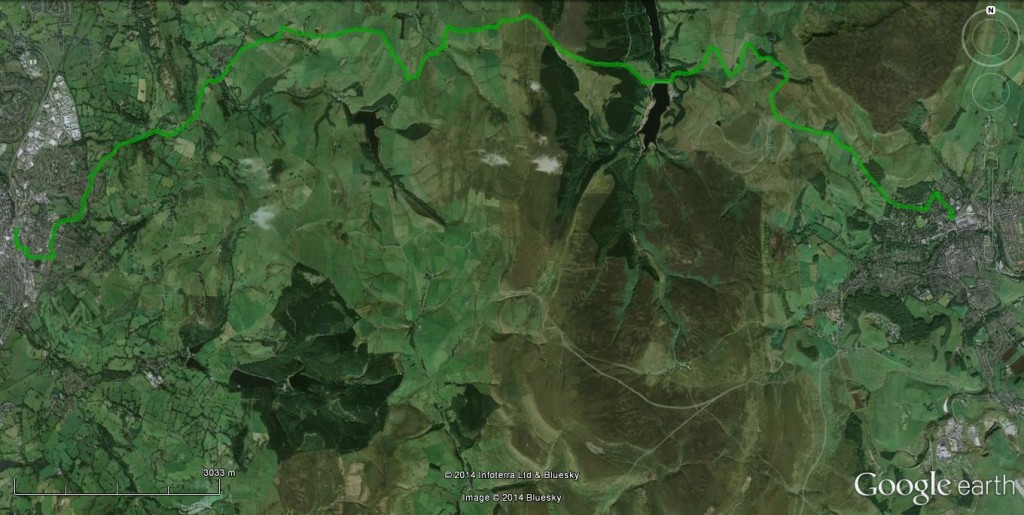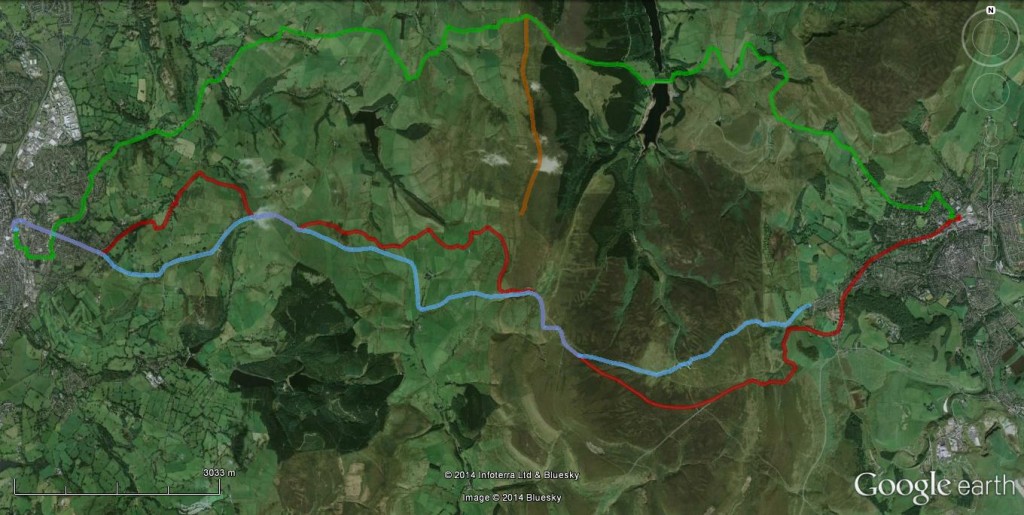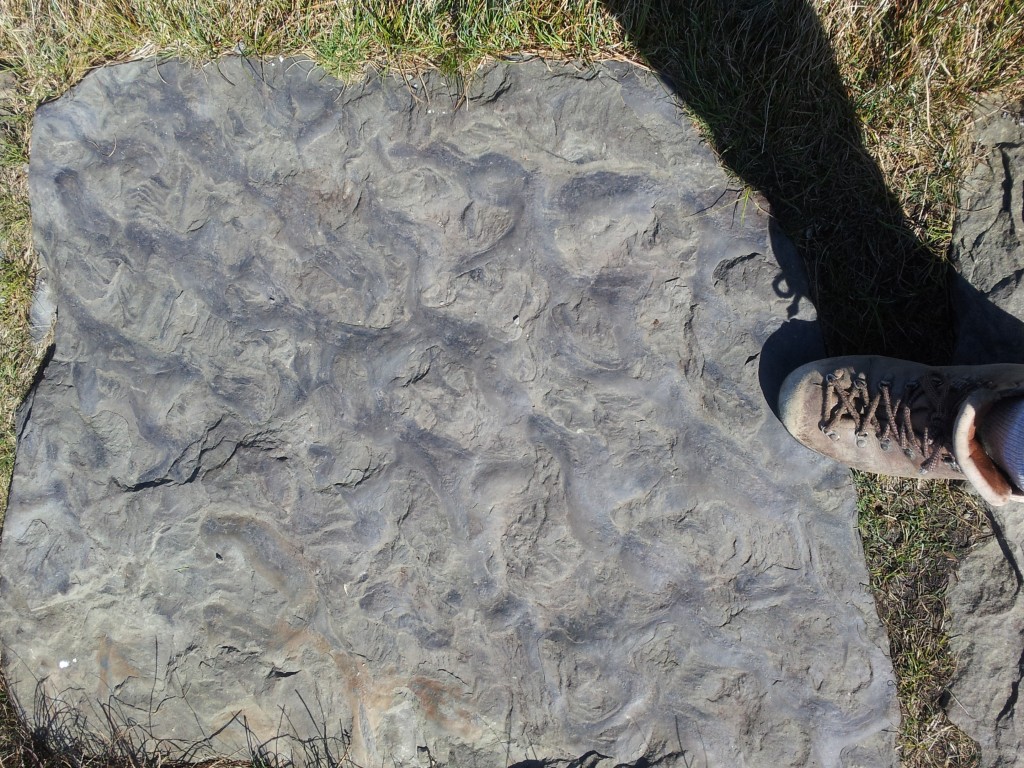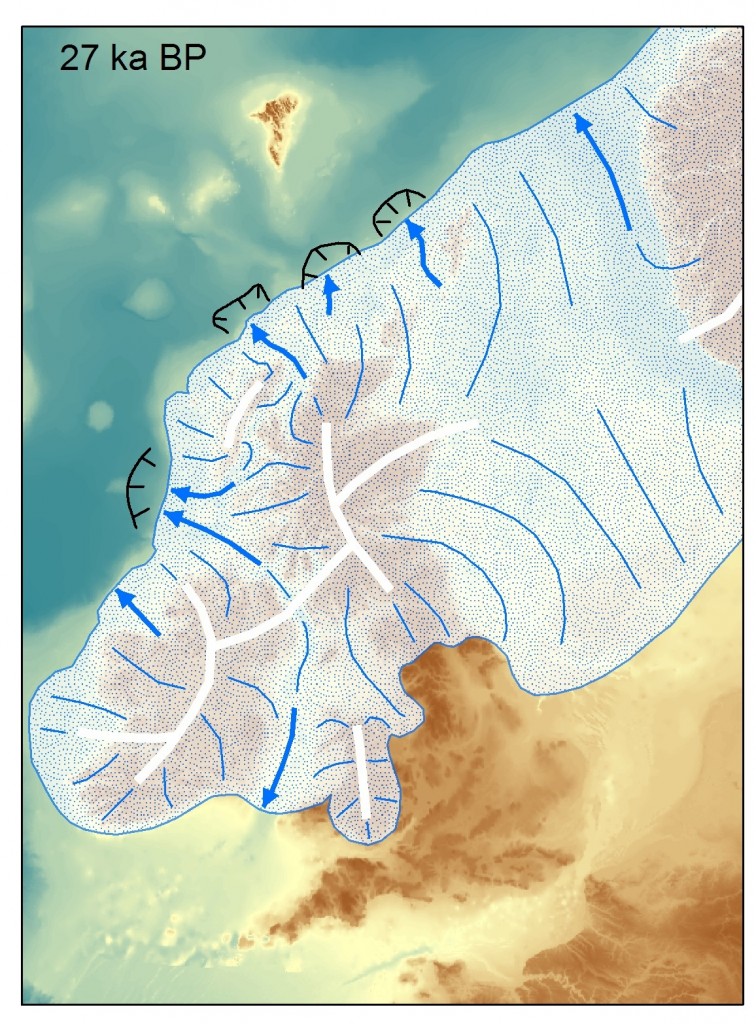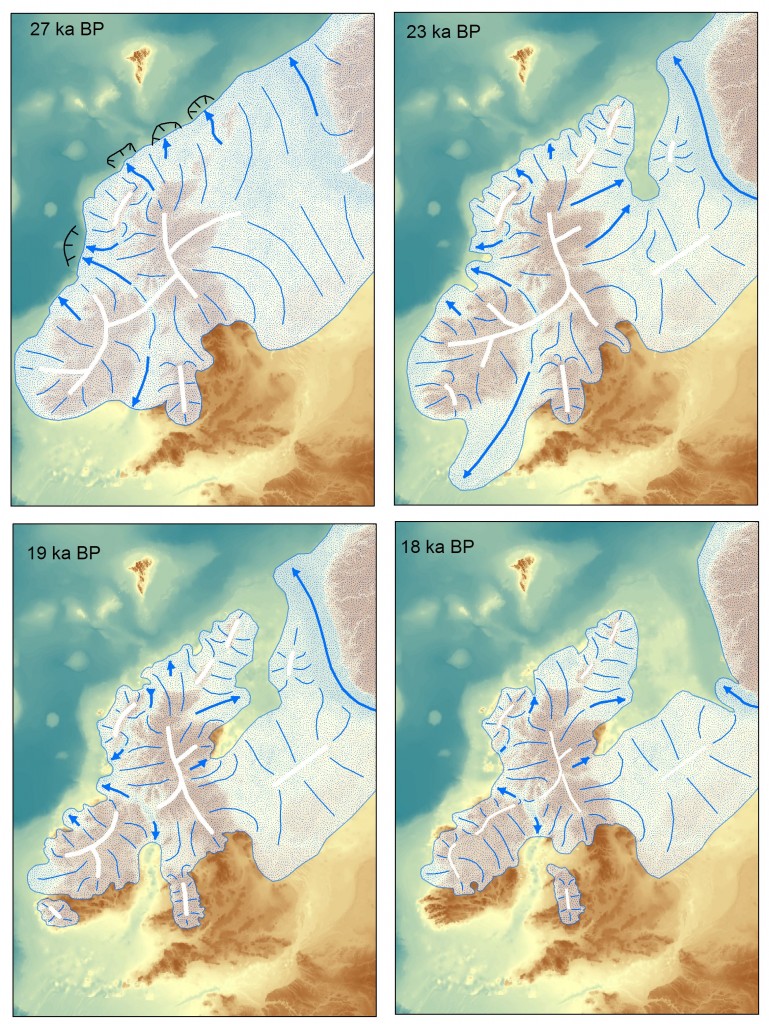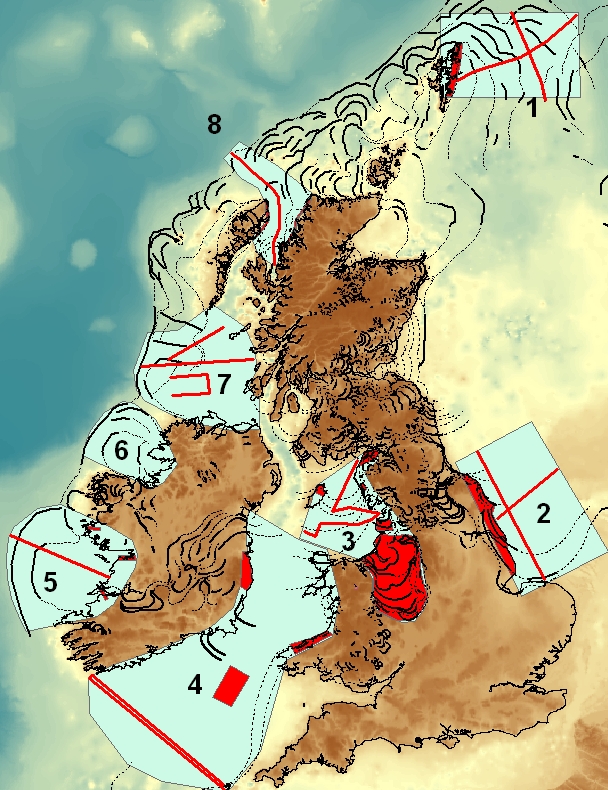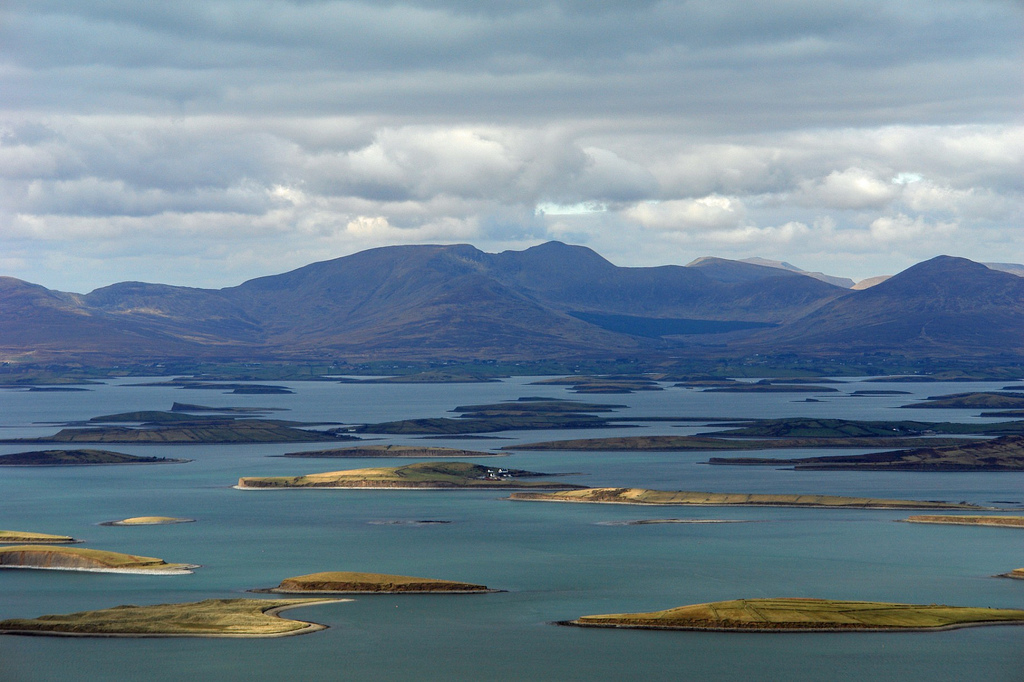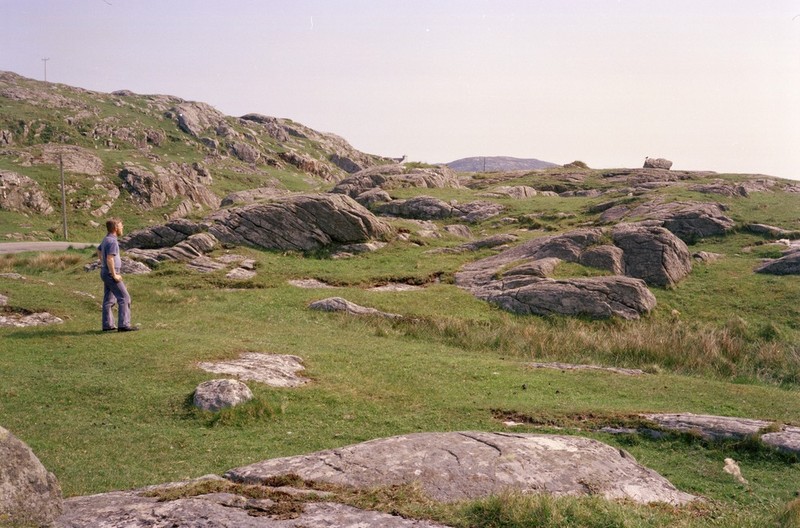As I chopped my first tree down it was wonderful to realise that – of course – counting the rings would tell me how old it was. Traversing through the layers of wood and so through time is one of the ways in which trees stimulate the imagination. As with wood, so with woodland.
Layers of life
The leaves lying on the ground fell only a few days ago, transforming the appearance of the woodland. The tops of the high beech trees are no longer shrouded in deep green mystery, their bare crowns are suddenly visible. By contrast the evergreen conifers seem almost luminous, dangerously catching the eye of a new woodland owner keen to make his axe a bit less shiny.
You always know what time of year it is in an English wood. The annual cycle of deciduous trees – winter starkness alternating with the lush privacy of summer – is matched on the woodland floor. Beech woodlands in the Chiltern hills of southern England are renowned for the spring flush of bluebells, as these and other spring-flowering plants make the most of the returning warmth in the brief window before the trees come into leaf and plunge the ground below into a dappled gloom.
Moving our sights up to the layer above we enter the world of saplings and small trees. Here they grew during the last 30 years, when very little happened to this woodland1. Some areas have a spread of native species: beech, oak, wild cherry, birch, rowan and doubtless others I’ve not spotted yet. Elsewhere flocks of fluffy evergreen western hemlock spruce saplings have spread wide beyond the base of their mother trees.
Many woodland owners see these as alien intruders, to be quickly exterminated. The bad reputation non-native conifers now have has a reasonable basis – shed needles acidify the soil and native wildlife can be baffled by the unfamiliar habitat. Four legged invaders such as grey squirrel and edible dormouse also roam the area, stripping bark and damaging trees. But arguments framed in terms of ‘alien invaders’ swamping the ‘natives’ who truly belong here are obviously bogus and repellent when applied to people. Is it really that different for trees? Why not view these saplings as second generation immigrants, adding variety and interest to their new home?
Nature versus nurture
Trees aren’t people of course, which is why it’s OK for me to attack them with an axe. In doing so, I’m part of a long tradition. These woods have been used and managed by humans for hundreds, probably thousands, of years. The large evergreens (larch, spruce and western red cedar) were planted during the ‘locust years’2 the period after the second world war when ‘scientific’ management was applied to British woodland. During this time ancient trees were cleared or even poisoned and great numbers of fast growing softwood trees planted, to be managed on an industrial scale. This caused great damage to wildlife, not purely because of the species chosen. Old gnarled half-dead trees are a great habitat, and the new trees were planted for timber, meaning close together so they grow straight. In the gloom below, little grew.
So did this invasion of aliens destroy a primeval forest, in tune with nature? Not at all. The North American concept of old growth forest simply doesn’t apply on this busy little island. For several hundred years the traditional beech woods of the Chilterns were managed for the furniture trade, especially here, near to High Wycombe. The ‘last bodger’ Owen Dean worked close nearby. Bodgers were craftsmen3 using traditional tools to make furniture within the woodland itself. The grand beech trees towering up in the canopy above me now were grown for timber and so lack side branches for many metres. These same trees are seen as slender youths in pictures of Mr Dean from the 1950s.
Down into the past
To go further back in time we need to look to the layers below. The soil will contain some trace of older vanished trees, even if we cannot read it directly. The top humus-rich layer is the result of hundreds of years of leaf-fall, never ploughed and rarely dug. The mushrooms that dot the forest floor in Autumn are just minor decorations on top of the mycelium, the fine fungus filaments that thread round roots and through rotting matter. Here is a potential continuity, providing a link – even if only an imaginative one – to the time of Shakespeare when the Chilterns were a major source of wood fuel for the nearby city of London.
This is an ‘ancient woodland’ site since we know if has been constantly wooded since at least 1600. Before this time we can only guess what grew and how it was used. Before oak trees were selectively removed to build the sinews of empire (bark for tanning leather, beams for warships) and beech favoured for furniture this was likely a mixed deciduous woodland made up of species that crept north into Britain after the end of the last Ice Age.
Humans were here too, for thousands of years. At some point a person sat on a stump to knap flint – banging pieces of this glassy stone together to make a sharp edge. I’ve yet to find a tool – an arrow head to kill deer perhaps, or an axe to chop firewood – but some of the useless discarded chips were in the first upturned tree I found.
The subsoil here is called ‘clay with flints’ which while descriptive is a bit of a cop-out of a name. It is a thin layer found on the very top of the chalk hills that make up the Chilterns. It’s basically the geology of southern England in minature: after the chalk it’s just about different ways of rearranging piles of flint. Soft soluble chalk contains a lot of hard flint – at first some thought clay with flints was simply the residue of the chalk dissolving over millions of years. But it’s likely there some trace of the younger marine sediments in there as well, all mixed up by the churning of the frozen ground during the Ice Ages (the scouring ice sheets never quite got this far).
The layers below the chalk are hidden, but will include Jurassic rocks – which further east are the source of North Sea oil deposits – and perhaps Carboniferous rocks – which to the north are rich in coal. Man’s interactions with these deeper layers brings us back to surface and to the future.
Back to the future
Think about woodlands and you keep coming back to cycles – the diurnal creeping of birds and animals, the annual dance of leaves and buds, changing fashions of woodland management over the generations. The biggest and most important is the carbon cycle. Across the world, ancient forests are being dug-up and burnt, releasing fossil carbon into the air. For the moment this is giving my trees a little boost, the extra carbon dioxide having a fertilising effect. In time though – probably in my life time – changing climate will make some of my trees deeply unhappy, through drought or storms or flooding or new pests or diseases.
One of the main joys of owning this little patch of woodland – other than hitting things with an axe – is the opportunity to plan what it will look like in 30 years time and then see it come to pass (touch wood). I’m still thinking the details through. The main goals – encourage wildlife, a source of firewood, a place my family can play outdoors – are clear. But the details – plant this, cut these down – are not. For me getting from one to the other means understanding all the layers of the wood, its past, its present and its likely future. It’s a process I’m enjoying hugely and the chances are I’ll write some more about it here. I hope you’ll be interested in what I have to say.


